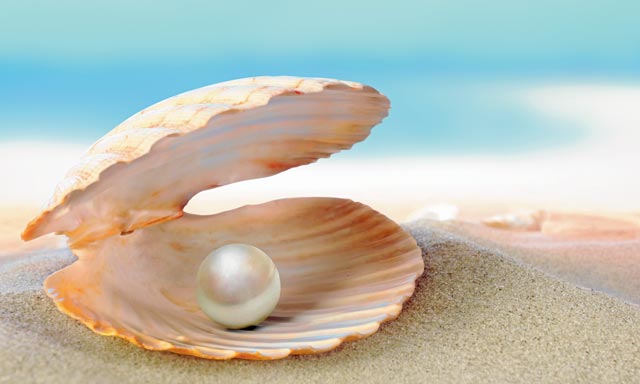Natural pearls are one of the world’s most unique gemstones and, with the Arabian Gulf right on our doorstep, we’re lucky to be surrounded by the world’s oldest, largest and rarest examples – no other place in the world grows more with such high quality and radiance.
The unique mix of fresh and salt water that surrounds Bahrain is one of the secrets behind the special lustre and brilliance of the pearls found in the Arabian Gulf. We caught up with Kristin Mahan from The Gemological Institute of America to find out what to look for when shopping for pearls.
Can you explain the history of pearls in Arabia?
The Arabian Gulf is the world’s most important source for natural pearls, which are extremely rare. Until the ’50s, 70 to 80 per cent of all pearls came from the region. The region was a centre for trade with northwest India and what is now the modern Middle East. A 4,000-year-old pearl was uncovered in 1989, and excavations at the ancient Bahrain’s Dilmun settlement have confirmed that pearl fishing has been going on for at least 3,000 years. Persian Gulf pearls range in colour from white to dark cream, and tend to be more yellow than those from the Red Sea and Strait of Manaar, whose characteristic colours are very light yellow, cream and very light pink. The Red Sea also produces some pearls in darker hues that range from intense pink to light to dark violet.
What are the different varieties of pearls?
Natural pearls are extremely rare and are often only found in the Arabian Gulf. Natural saltwater pearls are also found occasionally in California, Venezuela, China, Japan, India, French Polynesia, Africa and Australia – the same regions that have cultured pearl industries [where farmers create pearls under controlled conditions]. Salt-water cultured pearls, Tahitian cultured pearls, South Sea cultured pearls and freshwater cultured pearls are the other varieties.
How do you know you’re buying a good-quality pearl?
In order to evaluate the quality of pearls, you need to ask about size, shape, colour, lustre and surface. Be sure to ask your sales associate to go through these with you.
What should you look for when choosing pearls?
Size is important: a larger pearl is typically more valuable. The larger the pearl, the more rare and costly it tends to be. Shape is also an important factor. While round is the most familiar shape, pearls come in a variety of forms (round, near round, oval, button, drop, semi-baroque and baroque). No matter what its shape, if a pearl is symmetrical, it will be more valuable than one that’s irregular. Also, the intensity of light reflected from or just below the surface of the pearl – known as its ‘lustre’ – contributes the most to the beauty of a pearl. A pearl with excellent lustre will look bright and shiny, while one with poor lustre will be dull and far less valuable. A completely clean pearl is a rare treasure. Because rarity influences value, the prices of such pearls run extremely high.
How should you care for pearls?
To retain their beauty, pearls need a certain amount of moisture, which is why you should avoid storing pearls in an overly dry environment. The human body conveniently provides just the right amount of moisture. Worn often and properly cared for, pearls can look as good in 50 years as they did the day they left the store. Be aware that pearls are not the most durable of gems, so careless contact can damage them over time. Chemicals are the primary threat. Perfume, make-up and hairspray contain ingredients that can eat away at the pearl, permanently dulling it. The best way to clean your pearls is with a soft damp cloth, ideally after each time you wear them.
How can you update your look with pearls?
Pearls can make the fashion world your oyster. Style makers from Jackie Kennedy Onassis to Madonna have always seemed to agree on one thing: the appeal of pearls. Pearls have intrigued us for centuries. Designers continue to show them with everything from couture to casualwear.
For more on buying pearls and other gemstones, see www.gia.edu.
Pearls for men
Think pearls are just for girls? We’ve found some unique ways that men can wear the ocean’s jewel
If you let go of the feminine preconceptions about pearls, you’ll find that there are some masculine ways to wear this classic adornment. Gents can dress up a white shirt with pearl cufflinks or, for a harder edge, wear a single South Sea (black) pearl on a leather bracelet or necklace









